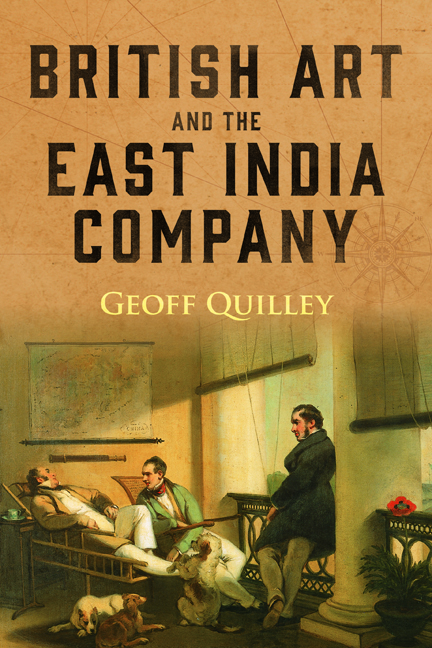Book contents
- Frontmatter
- Contents
- List of Illustrations
- Acknowledgements
- Chapter 1 Introduction: Corporate Patronage and Company Artists
- Chapter 2 ‘That Extensive Commerce’: the Maritime Image of the East India Company
- Chapter 3 Travels in India: Landscape and Colonial Patronage
- Chapter 4 Networks of Knowledge, Power and Cultural Exchange
- Chapter 5 The Cries of India: Colonial Power, Classification, and the Diffusion of Knowledge
- Chapter 6 By Way of China
- Chapter 7 Collecting India
- Chapter 8 Conclusion
- Select Bibliography
- Index
- Worlds of the East India Company
Chapter 2 - ‘That Extensive Commerce’: the Maritime Image of the East India Company
Published online by Cambridge University Press: 27 March 2021
- Frontmatter
- Contents
- List of Illustrations
- Acknowledgements
- Chapter 1 Introduction: Corporate Patronage and Company Artists
- Chapter 2 ‘That Extensive Commerce’: the Maritime Image of the East India Company
- Chapter 3 Travels in India: Landscape and Colonial Patronage
- Chapter 4 Networks of Knowledge, Power and Cultural Exchange
- Chapter 5 The Cries of India: Colonial Power, Classification, and the Diffusion of Knowledge
- Chapter 6 By Way of China
- Chapter 7 Collecting India
- Chapter 8 Conclusion
- Select Bibliography
- Index
- Worlds of the East India Company
Summary
As the leading mercantile company of eighteenth-century Britain, the East India Company was routinely regarded as the pulse of the commercial life of the nation as a whole. In substantial part, of course, this attitude was based on the enormous wealth and potential for wealth vested in the Company, and its uniquely privileged status after 1765 as the governing authority in the British colonies in India. Yet, the Company's authority rested not only on financial and political power, but also on a deeper association of its commercial function and character with the perceived identity of the nation at large.
British national identity during this period was increasingly articulated as being essentially maritime and commercial. On the one hand, the special character of the Anglican Church together with an insular geographical position giving on to the open expanse of the Atlantic demarcated Britain from the rest of Europe in an apparently divinely sanctioned manner. On the other hand, its political constitution was taken to encourage an entrepreneurial and individualistic society, where individual interests were joined to the larger collective good through the mutually beneficial bonds of commerce. Commentators from Defoe to Adam Smith broadly subscribed to the view expressed somewhat mystically by Jonas Hanway in 1753:
Commerce is the link by which men are united in love … so long as commerce is conducted with integrity, it must produce a connexion and harmony, such as constitutes an universal commonwealth, among the whole of mankind.
In addition, commercial society produced individuals able and motivated to exploit Britain's geographical advantages for global maritime development, with the result that, from at least the War of the Austrian Succession, the national identity was regarded as naturally imperial and colonial, with a prosperity that relied upon navigation. Four years after Hanway's statement, John Entick's New Naval History assured its readers:
By Navigation the whole World is connected, and the most distant Parts of it correspond with each other.
- Type
- Chapter
- Information
- British Art and the East India Company , pp. 53 - 92Publisher: Boydell & BrewerPrint publication year: 2020



